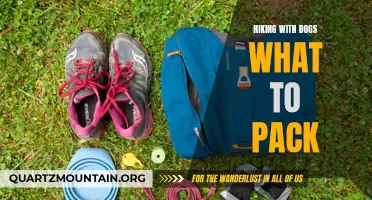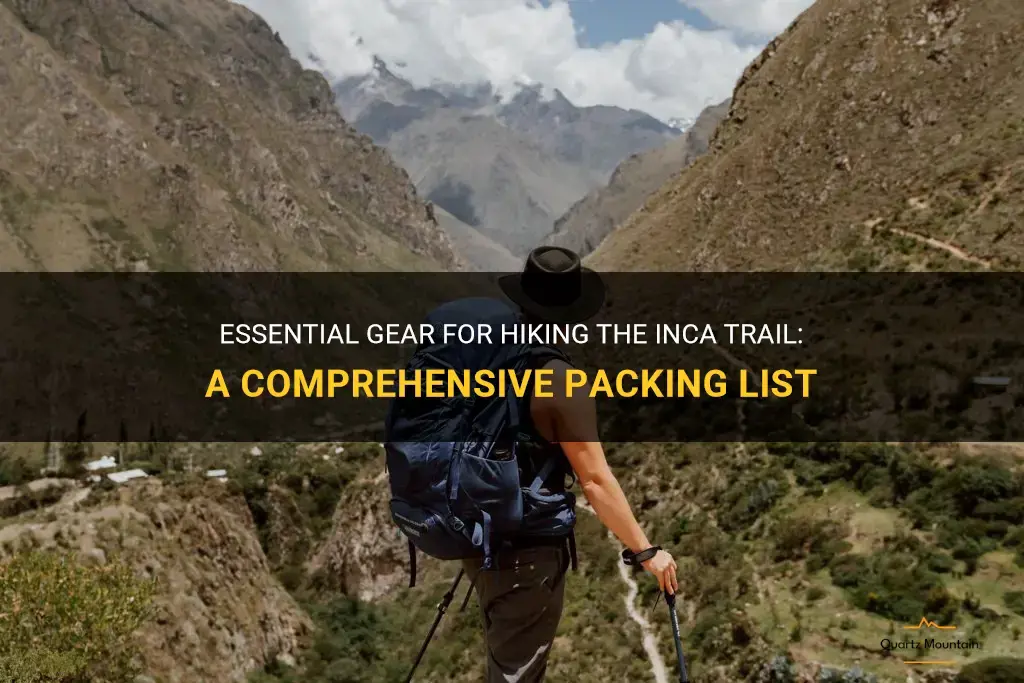
If you're planning to embark on the adventure of a lifetime and tackle the legendary Inca Trail, then you better make sure you have all the essential gear to keep you comfortable, safe, and prepared for the journey ahead. From sturdy hiking boots to lightweight sleeping bags and everything in between, this comprehensive packing list will ensure you have everything you need to conquer this iconic trail and make memories that will last a lifetime. So lace up your boots, tighten your backpack straps, and let's dive into the essential gear for hiking the Inca Trail.
| Characteristics | Values |
|---|---|
| Duration | 4 days, 3 nights |
| Distance | 43 kilometers |
| Altitude | Up to 4,200 meters |
| Difficulty | Moderate to challenging |
| Permits | Required |
| Accommodation | Camping |
| Weather | Varied |
| Clothing | Layered |
| Footwear | Hiking boots |
| Backpack | 30-35 liters |
| Sleeping bag | Rated for cold weather |
| Food | Provided by guides |
| Water | Bring water purification |
| Toiletries | Biodegradable |
| Sun Protection | Sunscreen, hat, sunglasses |
| First Aid Kit | Essential items |
| Electronics | Portable charger |
| Navigation | Map, compass |
| Optional Gear | Walking poles |
| Cash | Local currency |
What You'll Learn
- What are the essential items to pack for hiking the Inca Trail?
- Are there any specific clothing or gear requirements for hiking the Inca Trail?
- Are there any restrictions on what can or cannot be packed for the Inca Trail?
- Are there any recommended snacks or food items to pack for the duration of the Inca Trail hike?
- What are some additional items that are often overlooked but would be useful to pack for hiking the Inca Trail?

What are the essential items to pack for hiking the Inca Trail?
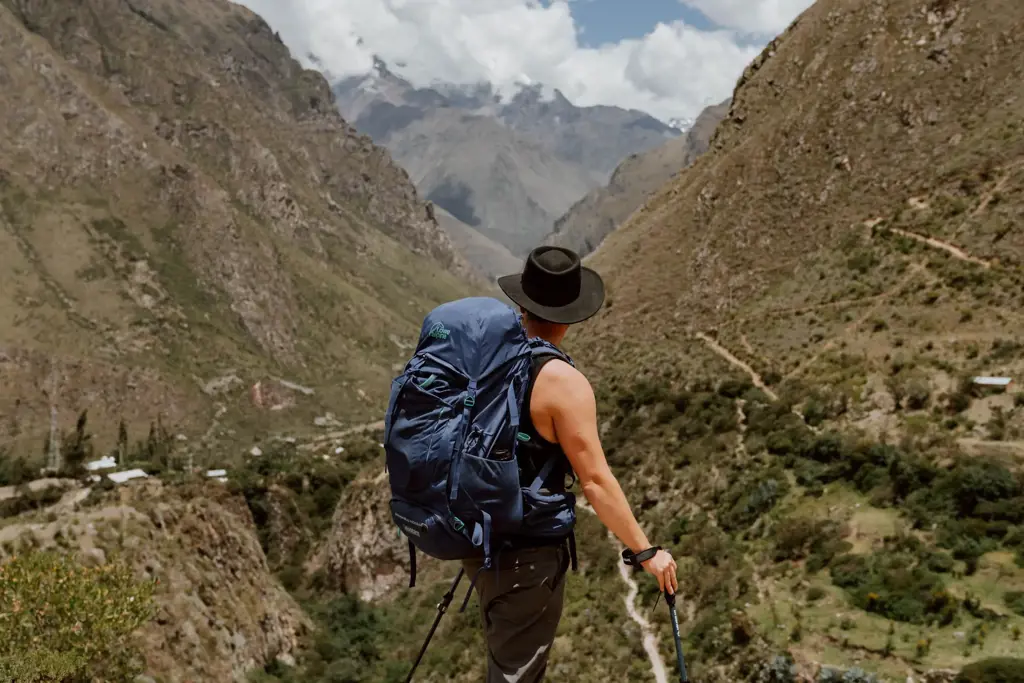
The Inca Trail is a famous hiking route in Peru that leads to the historic site of Machu Picchu. This challenging trek is not for the faint of heart, but the breathtaking views and rich cultural history make it a must-do for many adventurers. If you're planning to hike the Inca Trail, it's important to be well-prepared. Here are some essential items you should pack for this incredible journey.
Hiking Boots:
A sturdy pair of hiking boots is crucial for tackling the rugged terrain of the Inca Trail. Look for boots that provide good ankle support and have a grippy sole to help prevent slips and falls on the steep and slippery sections of the trail.
Backpack:
You'll need a reliable backpack to carry all of your gear throughout the trek. Look for one that is lightweight, comfortable, and has enough space to hold your essentials, such as water, snacks, extra layers of clothing, and a sleeping bag.
Water Bottle and Water Purifier:
Staying hydrated is crucial during any hike, especially on the Inca Trail. Make sure to bring a sturdy water bottle that can hold enough water to last you between refills. It's also a good idea to bring a water purifier, as there may not always be readily available clean water sources along the trail.
Clothing Layers:
The weather on the Inca Trail can be unpredictable, with hot days and cold nights. It's important to pack clothing layers that you can easily add or remove as needed. Opt for moisture-wicking and quick-drying materials to help keep you comfortable and dry throughout the trek.
Sleeping Bag:
During the Inca Trail trek, you'll be staying at campsites along the way. It's essential to bring a good quality sleeping bag that is appropriate for the expected temperatures. Look for a lightweight and compact sleeping bag that will fit comfortably in your backpack.
Headlamp:
A headlamp is a handy item to have for camping during the Inca Trail trek. It will provide you with hands-free light for navigating the campsites in the dark, especially when using shared facilities like bathrooms.
First Aid Kit:
Accidents can happen while hiking, so it's important to have a basic first aid kit on hand. Make sure your kit includes items such as adhesive bandages, antiseptic wipes, pain relievers, and any necessary prescription medications.
Trekking Poles:
Trekking poles can provide added stability and support, especially on the steep and uneven sections of the Inca Trail. They can help reduce the strain on your knees and improve balance, making your hike more comfortable.
Sun Protection:
The sun can be intense on the Inca Trail, especially at higher altitudes. It's essential to pack sun protection items such as sunscreen, sunglasses, and a hat to protect yourself from harmful UV rays.
Snacks and Energy Food:
Hiking the Inca Trail requires a lot of energy, so make sure to pack a variety of nutritious snacks and energy food to keep you fueled throughout the trek. Granola bars, trail mix, and dried fruits are great options that are lightweight and easy to pack.
Remember, the Inca Trail is a challenging trek that requires adequate physical fitness and preparation. By packing these essential items, you'll be better equipped to tackle the trail and make the most of this incredible adventure.
Essential Packing List for a Two-Week Trip to Spain
You may want to see also

Are there any specific clothing or gear requirements for hiking the Inca Trail?
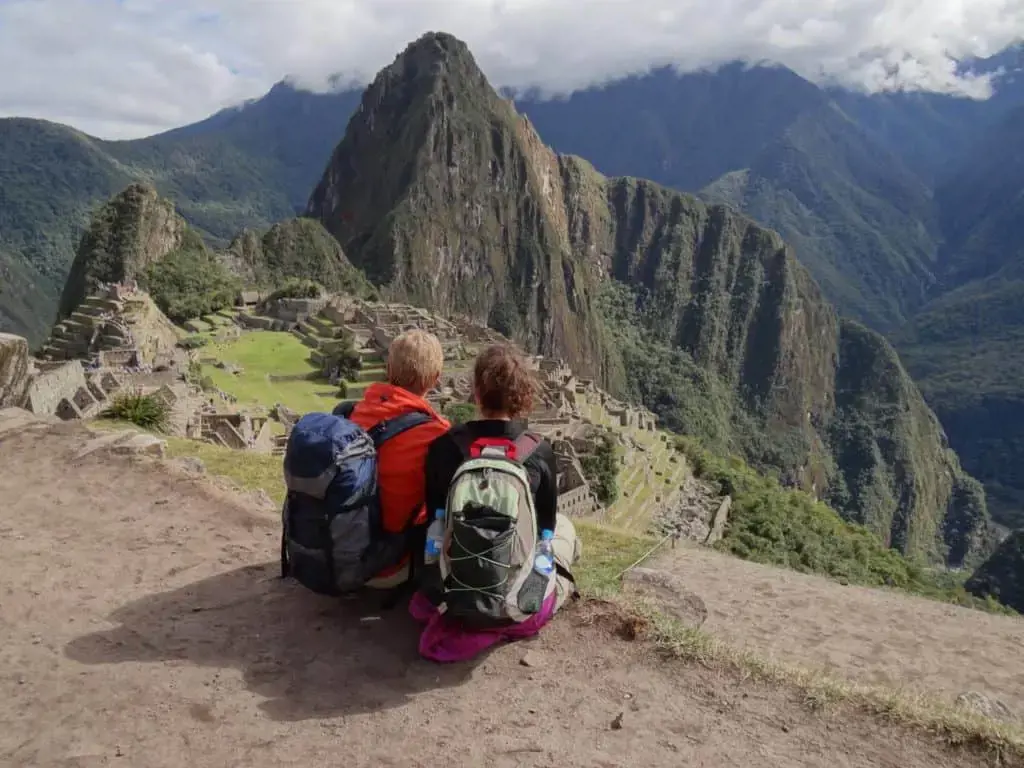
Hiking the Inca Trail is an adventure of a lifetime, but it requires careful planning and preparation. One important aspect of this preparation is ensuring you have the proper clothing and gear for the journey. In this article, we will discuss the specific clothing and gear requirements for hiking the Inca Trail.
Clothing:
- Comfortable hiking boots: A good pair of hiking boots is essential for the Inca Trail. They should offer ankle support and have a good grip on different terrains. Make sure to break them in before the trek to avoid blisters.
- Moisture-wicking socks: Choose socks made of moisture-wicking materials to keep your feet dry and prevent blisters. Avoid cotton socks as they retain moisture.
- Quick-drying pants: Opt for lightweight and quick-drying pants that offer flexibility and protection. Convertible pants are a great option as they can be converted into shorts when needed.
- Moisture-wicking shirts: Wear moisture-wicking shirts that help to keep you dry and comfortable during the hike.
- Layered clothing: The weather on the Inca Trail can vary, so it's important to dress in layers. Pack a lightweight jacket or fleece for cooler temperatures and remove layers as needed.
- Rain gear: Be prepared for rain by bringing a waterproof jacket or poncho and waterproof pants. These will protect you from getting wet and keep you warm.
- Sun protection: The sun can be intense at high altitudes. Wear a wide-brimmed hat, sunglasses, and use sunscreen to protect your skin from harmful UV rays.
Gear:
- Backpack: Choose a lightweight backpack with a capacity of around 30-40 liters to carry your essentials. Make sure it has a comfortable hip belt and adjustable shoulder straps.
- Sleeping bag: Invest in a high-quality sleeping bag suitable for low temperatures. The temperature can drop in the evenings, especially at higher altitudes.
- Trekking poles: Trekking poles provide stability and reduce the strain on your knees while descending steep sections. Choose collapsible poles for easy packing.
- Headlamp: A headlamp is essential for navigating in the dark, especially during early morning starts or late-night trips to the bathroom.
- Water bottle or hydration system: Staying hydrated is crucial while hiking the Inca Trail. Carry a refillable water bottle or a hydration system to ensure an adequate water supply.
- First aid kit: It's recommended to carry a basic first aid kit that includes bandages, pain relievers, antiseptic wipes, and any necessary prescription medications.
- Snacks and energy bars: Pack lightweight and high-energy snacks to keep yourself fueled during the hike.
It's important to note that the Inca Trail is regulated, and trekkers must hire a licensed tour operator. These tour operators typically provide a list of suggested clothing and gear for the trek, so be sure to follow their recommendations.
In conclusion, hiking the Inca Trail requires appropriate clothing and gear to ensure a safe and enjoyable experience. Invest in high-quality items, dress in layers, and be prepared for changing weather conditions. By following these recommendations, you'll be well-equipped to tackle the incredible journey that awaits you on the Inca Trail.
Essential Items for a Well-Packed Wildland Fire Pack
You may want to see also

Are there any restrictions on what can or cannot be packed for the Inca Trail?
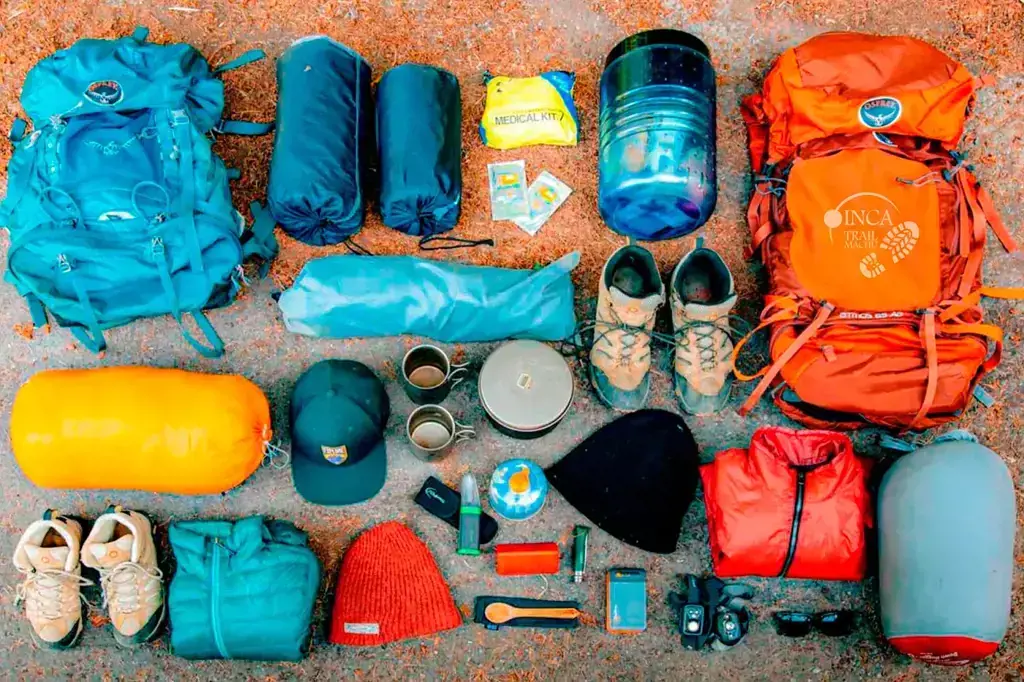
When preparing for the Inca Trail, it is important to know that there are certain restrictions on what can and cannot be packed. These restrictions are in place to protect the environment and ensure the safety of all hikers. In this article, we will discuss some of the items that are not allowed on the Inca Trail, as well as some suggestions for what to pack instead.
One of the most important things to note is that single-use plastic bottles are not allowed on the Inca Trail. This is because they contribute to pollution and can be harmful to the local wildlife. Instead of bringing plastic bottles, it is recommended to bring a reusable water bottle and a water purifier or iodine tablets to treat the water along the trail.
Another item that is not allowed on the Inca Trail is drones. Drones can disturb the local wildlife and disrupt the tranquility of the trail. If you want to capture aerial footage of your hike, it is best to hire a professional photographer who is familiar with the regulations and can capture the beauty of the trail without causing harm.
In addition to these specific restrictions, there are also general guidelines for what not to pack on the Inca Trail. It is important to pack light and only bring the essentials. Heavy backpacks can put unnecessary strain on your body and make the hike more difficult. Some items that are not necessary on the Inca Trail include excessive clothing, jewelry, and electronics. It is best to leave these items at home and focus on packing lightweight and functional gear.
When packing for the Inca Trail, it is also important to consider the weather and the terrain. The trail can be steep and uneven at times, so it is important to have sturdy hiking boots and proper hiking clothes. It is also a good idea to pack layers, as the temperature can vary throughout the day. A waterproof jacket is also essential, as rain is common in the region.
Finally, it is important to pack any necessary medications and first aid supplies. These can include things like ibuprofen, band-aids, and blister pads. It is also a good idea to pack sunscreen and insect repellent, as the sun and bugs can be quite intense along the trail.
In conclusion, there are certain restrictions on what can and cannot be packed for the Inca Trail. It is important to be mindful of these restrictions in order to protect the environment and ensure the safety of all hikers. By packing responsibly and focusing on the essentials, you can have a safe and enjoyable hike on the Inca Trail.
Must-Have Packing List for Adventures by Disney London and Paris Itinerary
You may want to see also

Are there any recommended snacks or food items to pack for the duration of the Inca Trail hike?

When embarking on a multi-day hike such as the Inca Trail, it is important to fuel your body properly with a diet that is both nourishing and lightweight. Packing the right snacks and food items can make a big difference in your energy levels and overall enjoyment of the journey. Here are a few recommended options to consider for your Inca Trail adventure.
Trail Mix:
Trail mix is a classic hiking snack for a reason. It is lightweight, easy to pack, and provides a good balance of healthy fats, carbohydrates, and protein. Look for a mix that includes a variety of nuts, dried fruits, and even some chocolate or seeds for an added boost of energy and flavor.
Energy Bars:
Energy bars are another convenient and compact option for hiking. Choose bars that are high in protein and fiber, and low in sugar. Look for options made with whole, natural ingredients like nuts, seeds, and dried fruits. These bars can provide a quick and easy source of fuel when you need an extra boost on the trail.
Jerky:
Jerky is a great source of protein and can be a savory alternative to sweet snacks. Choose options that are made from lean meats like turkey or beef, and look for brands that use minimal additives or preservatives. Jerky is lightweight and does not need refrigeration, making it an ideal option for a long hike like the Inca Trail.
Nut Butter:
Nut butter, such as peanut or almond butter, is a versatile and nutrient-dense option for a long hike. It can be spread on crackers or bread for a quick and satisfying snack, or used to enhance the flavor and texture of other foods. Single-serve packets are a convenient option for packing and can be easily carried in your backpack.
Dehydrated Meals:
For the main meals on the trail, dehydrated meals are a popular choice among hikers. These meals are lightweight, easy to prepare, and can be packed with a variety of nutrients. Look for options that include a mix of carbohydrates, protein, and vegetables to ensure a balanced and satisfying meal. Just add hot water, let it rehydrate, and you have a filling meal ready to enjoy.
Fresh Fruits and Vegetables:
While fresh fruits and vegetables may not be practical for the entire duration of the hike, they can be a refreshing and nutritious addition to your first day's meals. Apples, oranges, and carrots are sturdy options that can withstand a few days in your pack without spoiling. These foods can provide essential vitamins and minerals to keep your immune system strong and your energy levels high.
In summary, when packing snacks and food items for the Inca Trail hike, it is important to choose options that are lightweight, nutrient-dense, and easy to pack. Trail mix, energy bars, jerky, nut butter, dehydrated meals, and fresh fruits and vegetables can all provide nourishment and energy to fuel your adventure. Remember to prioritize foods that you enjoy and that provide a good balance of carbohydrates, protein, and healthy fats to keep you fueled and satisfied throughout the journey.
Essential Gear for Elk Hunting in New Mexico: What to Pack
You may want to see also

What are some additional items that are often overlooked but would be useful to pack for hiking the Inca Trail?
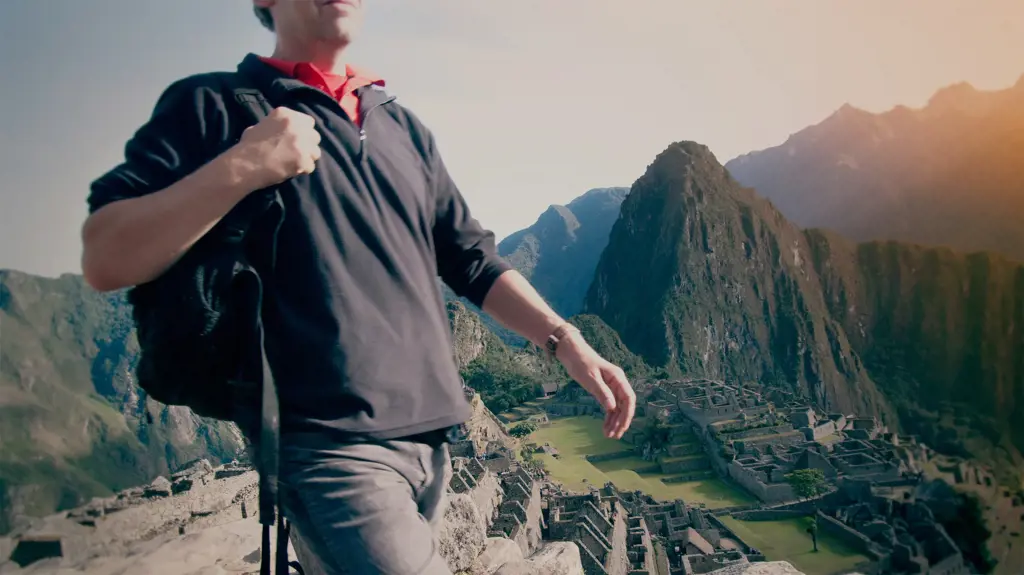
When planning to hike the famous Inca Trail in Peru, it is important to pack all the necessary items to ensure a smooth and comfortable journey. While most hikers remember to bring essentials such as a tent, sleeping bag, and appropriate clothing, there are a few additional items that are often overlooked but would be useful to have during the trek. These extra items can enhance your hiking experience and help you overcome any unexpected challenges along the way.
One useful item that hikers often overlook is a pair of trekking poles. Trekking poles provide stability and support, especially when navigating steep and uneven terrain. They help distribute your weight and reduce stress on your knees and joints, making your hike more comfortable and preventing injuries. Additionally, trekking poles can be used to test the stability of the ground before taking each step, ensuring that you don't slip or stumble on loose rocks or unstable surfaces.
Another commonly overlooked item is a portable water filter or purification tablets. The Inca Trail can be physically demanding, and it is crucial to stay hydrated throughout the hike. While there are water sources along the trail, it is always recommended to purify or filter the water before drinking it. A portable water filter or purification tablets are lightweight and easy to carry, allowing you to have access to safe drinking water wherever you are on the trail.
A lightweight and compact camping stove is another item that would be useful to pack for hiking the Inca Trail. While some tour operators provide meals during the hike, having your own camping stove allows you to prepare hot drinks and simple meals whenever you want. It can be comforting to enjoy a hot cup of coffee or tea in the morning or have a warm meal at the end of a long day of hiking. Additionally, having your own stove gives you the flexibility to cook meals that suit your dietary preferences or restrictions.
Insect repellent is often overlooked but is essential for hiking the Inca Trail, especially during the rainy season when mosquitoes and other biting insects are more prevalent. Applying insect repellent can help prevent itchy and irritating bug bites, and reduce the risk of contracting insect-borne diseases. It is recommended to choose a repellent that contains DEET and apply it to exposed skin before starting your hike.
Finally, packing a compact and lightweight first aid kit is crucial for any hiking adventure, including the Inca Trail. The kit should include essentials such as band-aids, antiseptic ointment, pain relievers, blister treatment, and any personal medications you may need. It is always better to be prepared for any minor injuries or ailments that may occur during the trek.
In conclusion, while planning to hike the Inca Trail, it is essential to pack all the necessary items for a safe and comfortable journey. In addition to the standard hiking gear, it is important to consider some often overlooked but useful items such as trekking poles, a portable water filter or purification tablets, a camping stove, insect repellent, and a first aid kit. These additional items can greatly enhance your hiking experience, ensuring that you are prepared for any challenges that may arise along the way.
The Ultimate Guide to Packing for a Day of Fun at an Amusement Park
You may want to see also
Frequently asked questions
When hiking the Inca Trail, it is important to pack lightweight, moisture-wicking clothing that can be layered, as the weather can be unpredictable. You should also bring a good pair of hiking boots that have been broken in, as well as extra socks. Additionally, bring a backpack with a rain cover to protect your gear, a hat to shield your face from the sun, and a jacket or sweater for cool nights. Other essentials include a water bottle, sunscreen, insect repellent, and a first aid kit.
For hiking the Inca Trail, you should bring a backpack that is comfortable and fits your body well. Look for one that has padded shoulder straps and a hip belt for added support. It should have multiple compartments to help you organize your gear and a rain cover to protect it from the elements. It is also important to choose a backpack that is the right size for the length of your trip and can comfortably carry all of your essential items.
It is recommended to bring at least 2-3 liters of water per person per day when hiking the Inca Trail. Staying hydrated is crucial, especially at high altitudes where the air is drier and you may not feel as thirsty. You can either bring a hydration bladder or multiple water bottles. It is important to note that water sources along the trail may not always be safe to drink from, so it is best to bring enough water for the duration of your hike.
There are a few items that you should not forget to pack when hiking the Inca Trail. These include a headlamp or flashlight for navigating in the dark, extra batteries for your electronic devices, and a portable charger for your phone or camera. You should also pack a comfortable sleeping bag and a camping pillow for a good night's rest. Lastly, don't forget to bring some cash in small denominations for tipping the porters and guides along the trail.


